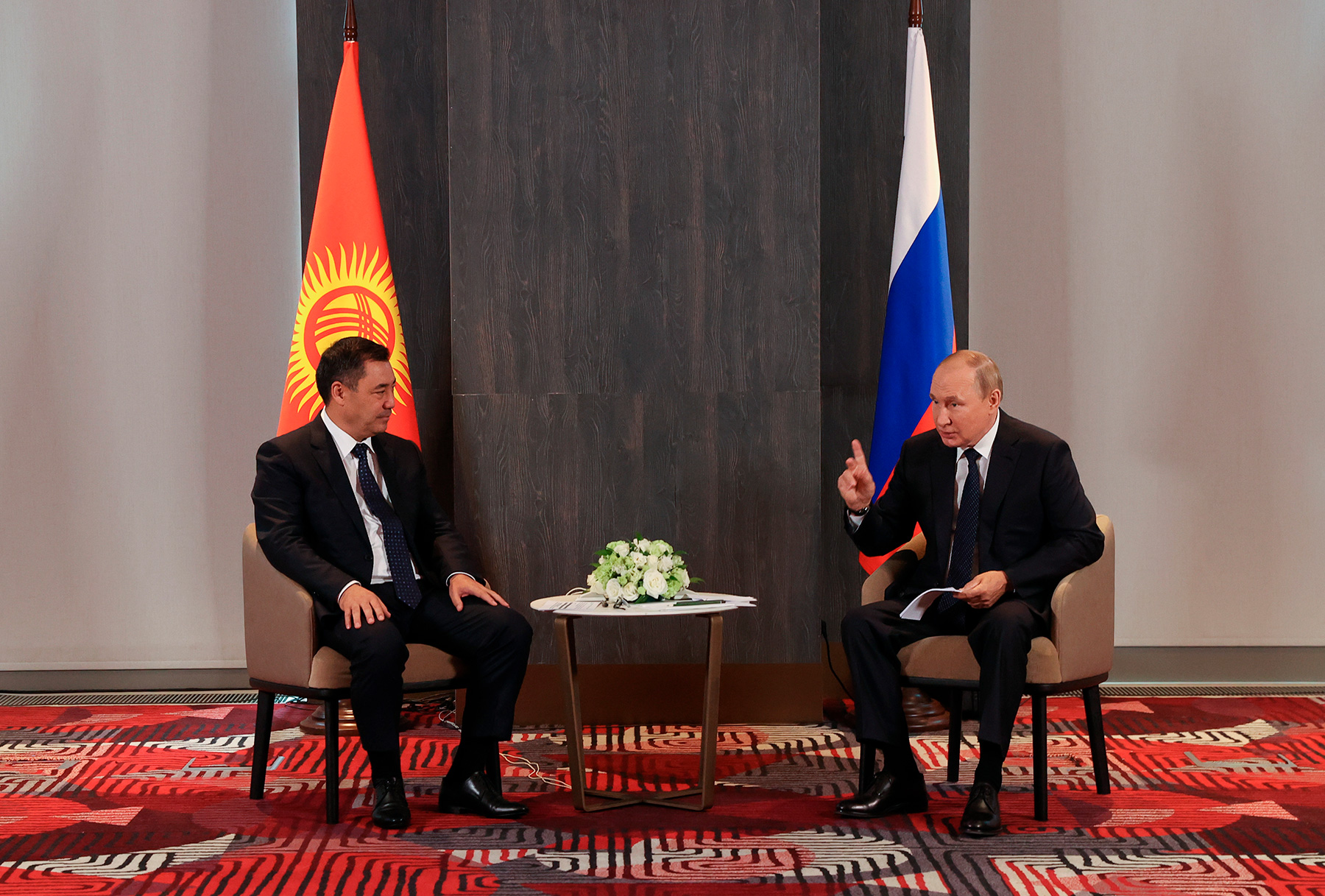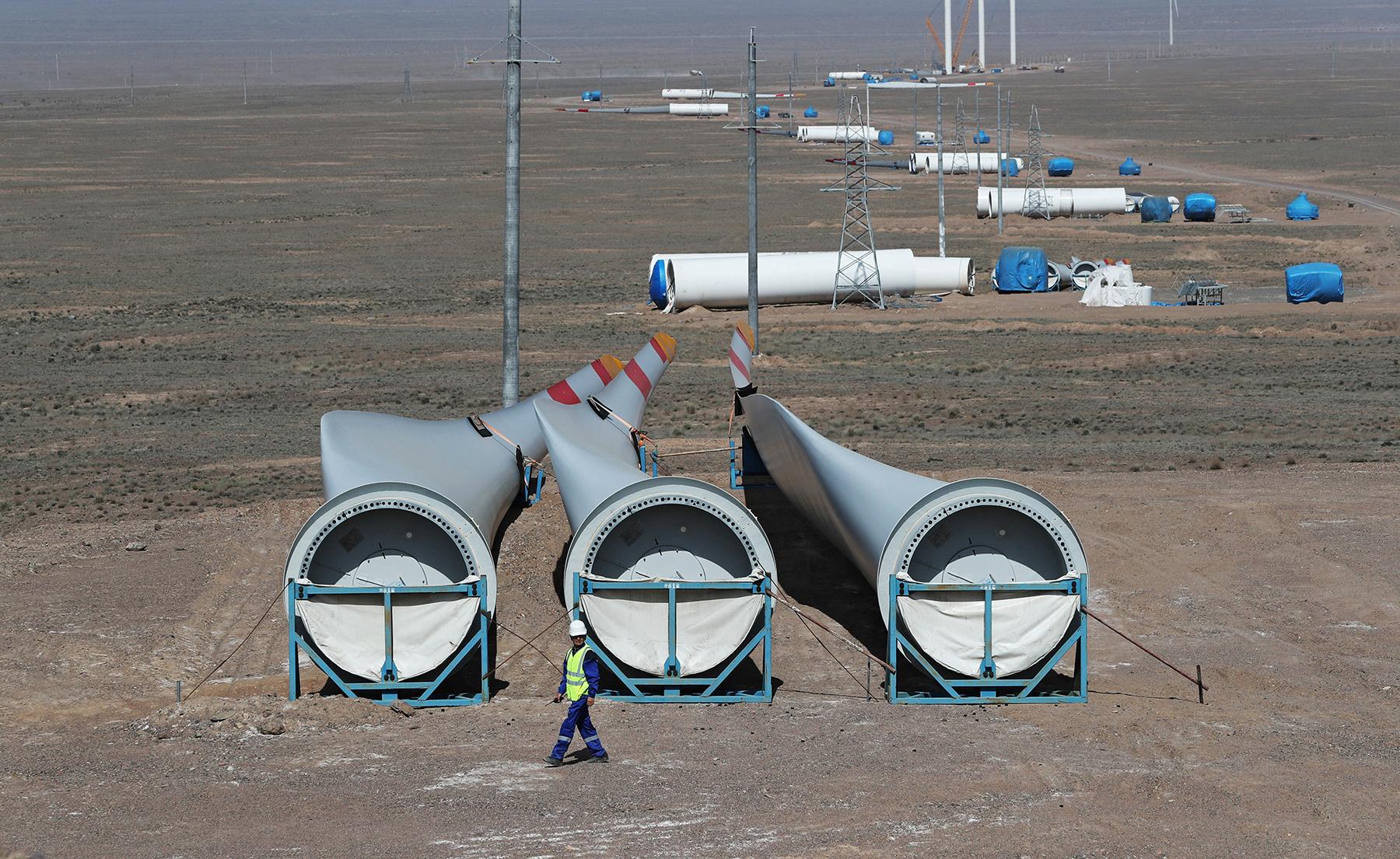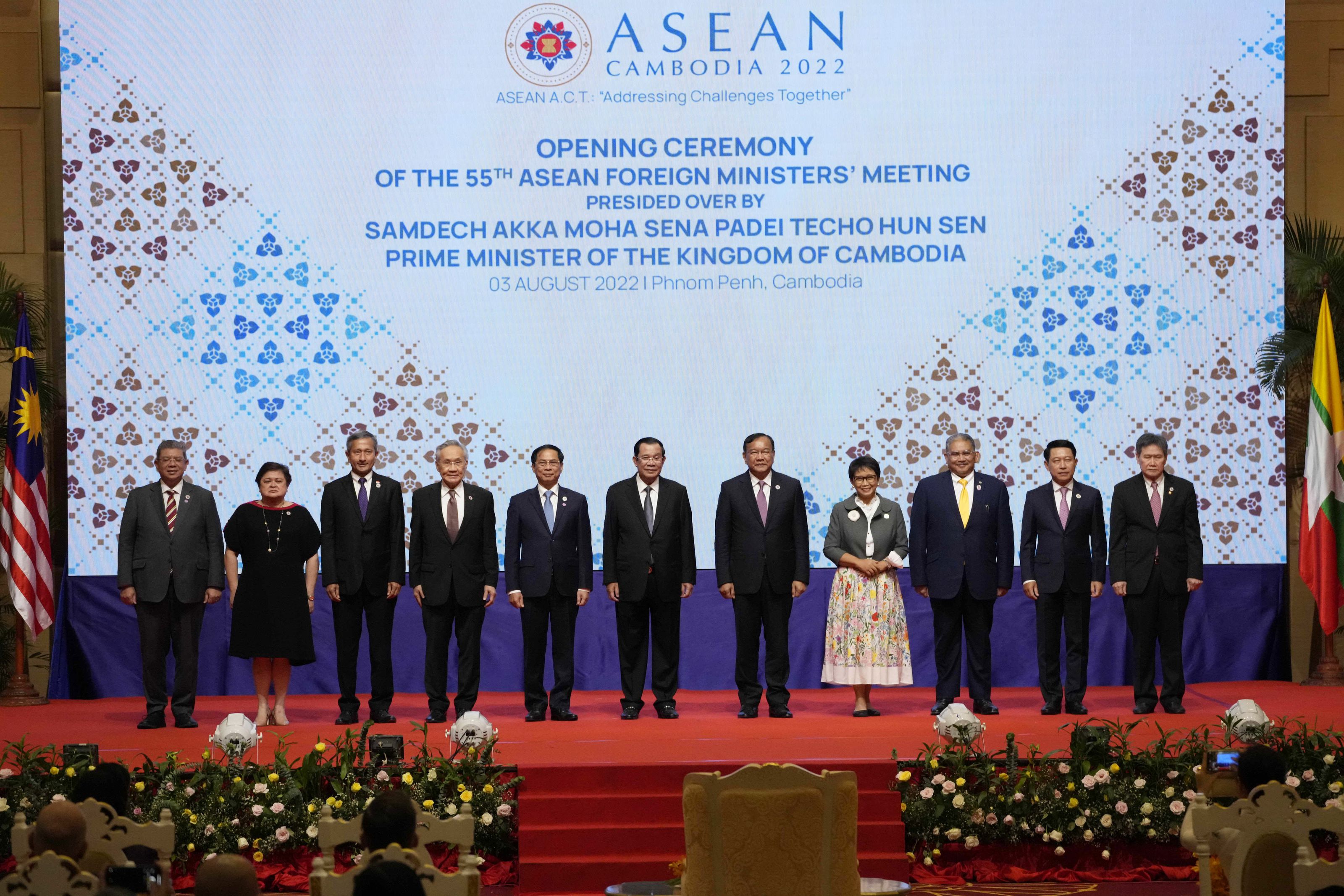Russia commences its presidency in the Eurasian Economic Union (EAEU) in 2023. The very fact of any state presiding in an integration association is important, since it gives this nation a chance to articulate its priorities, aligning plans of various initiatives with its own needs, etc. However, Russia, which has been in economic war with the Collective West for more than a year, sets much more ambitious and large-scale objectives within the Union’s framework—from establishing a Eurasian rating agency to achieving “genuine independence and self-sufficiency” in the realm of technology. These objectives go far beyond 2023 and, by definition, cannot be fulfilled within a single calendar year.
The priorities of Russia’s EAEU presidency in 2023 and, more broadly, Russia’s vision for the Union over the next 5-10 years would be incomplete without an updated strategy for trade and economic ties between the association and its foreign partners.
In the current environment, one should not count on solid figures with all partners in the negotiation track or a sharp and, most importantly, stable and dynamic increase in trade turnover. In the current situation, the target-setting mechanism of trade agreements for Russia, especially the FTAs within the EAEU, should, by definition, change—and it might focus on three main functions.
The first is offering privileged conditions for the imports of critical products to Russia, such as electronics, semiconductors and equipment. The second is the expansion of export channels to divert Russian products that are no longer in demand in Europe to new markets. The third is the formation, via a network of FTAs, of new regional entry points and hubs, each capable of performing a specific function depending on the regional specifics.
With the Collective West seeking to exclude Russia from global economy and trade, technological sovereignty, alternative financial mechanisms and foreign relations within the EAEU become a more significant tool for Moscow to make up for sanctions losses and to get adapted to external shocks.
Russia commences its presidency in the Eurasian Economic Union (EAEU) in 2023. The very fact of any state presiding in an integration association is important, since it gives this nation a chance to articulate its priorities, aligning plans of various initiatives with its own needs, etc. However, Russia, which has been in economic war with the Collective West for more than a year, sets much more ambitious and large-scale objectives within the Union’s framework—from establishing a Eurasian rating agency to achieving “genuine independence and self-sufficiency” in the realm of technology. These objectives go far beyond 2023 and, by definition, cannot be fulfilled within a single calendar year. This is why it would be more appropriate to review the priorities of the Russian presidency in the EAEU, outlined by the Russian president back in December 2022, in a broader strategic context.
Previously, despite the abundance of official statements and documents, the EAEU played a peripheral role in Russia’s foreign policy, and the Union’s practical value for Moscow was highly questionable. Now, the Union is becoming an important tool for Russia to heighten its resistance to sanctions, reducing technological and financial dependence on the West and fostering foreign trade with friendly nations.
Hitching the wagon to industrial and technological sovereignty
Russia’s significant dependence on mechanical engineering imports as well as components and intermediate consumption goods from Western markets requires long-term import substitution programs for those products, along with technological sovereignty as long as this remains rational in terms of long-term inter-industry efficiency and economic security. Among the mandatory requirements for such programs are clearly defined timeframes and criteria of efficiency, as well as medium- and long-term rise to the world level in terms of making or manufacturing competitive products geared for export (after the domestic market is saturated).
In the midst of restrictions on imports of industrially manufactured products and technologies from unfriendly states, Russia needs to establish alternative supplies from its partner countries, as well as to set up parallel import channels, to ensure more systematic use of the transit capacity of its EAEU partners, especially given that national import substitution programs are not yet fully operational. At the same time, in the year of Russia’s presidency and in subsequent years, it is crucial for Russia to avoid legalizing the parallel import mechanism at the EAEU level. Otherwise, it might lead to an even greater politicization within the association, which would face natural resistance from other member states.
To facilitate parallel imports, two main areas of intervention seem feasible. The former entails building diversified logistics channels to install uninterrupted supply chains. This implies the establishment of foreign trading houses in the EAEU nations, which can serve as a safety net, as well as extending the business chain of new intermediaries from third countries that have refused to impose sanctions. The latter is to create direct and tangible benefits for the Union’s partners, which can outweigh the potential risks.
Importantly, the more active the EAEU countries are helping Russia circumvent Western restrictions, the greater their vulnerability to the U.S. and EU sanctions pressure will be. In the future, the range of these risks will only expand, with Russia having to take a more scrupulous approach to maintaining a balance of interests in its dialogue with the partners. For example, amidst the current global energy and food inflation crises, as well as rising global interest rates, Russia can offer commodities, food and debt refinancing on more favorable grounds to the EAEU member states in return.
No dollar, no problem?
The imposition of tough financial sanctions on Russia, including the disconnection of some national banks from SWIFT, is causing significant losses for the nation’s finances. This is due to the fears of real sector companies, banking and financial institutions from friendly states of being “hit” as well as the technical difficulty of conducting financial transactions or entering into commercial transactions denominated in USD and EUR with sanctioned banks and businesses in Russia.
These risks are critical when addressing Russia’s objectives of restructuring import and export flows, as they can actually block cooperation within the EAEU. In this regard, there is a growing demand for an anti-sanctions financial infrastructure with regional development institutions and national regulators of the EAEU member states involved to cooperate with Russia under lesser risks. For example, in the form of building a Eurasian payment system, more active connection of central banks from friendly countries to the Central Bank’s financial messaging system (CFMS), developing a network of mutual correspondent accounts between Russian and foreign banks in national currencies.
In early March 2022, the Asian Infrastructure Investment Bank (AIIB) and the BRICS New Development Bank (NDB) announced the suspension of transactions to Russia and Belarus. The decision of the financial institutions to freeze their lending to both countries is the clear evidence of the growing pressure on global financial institutions, which may have a negative impact on Russia’s participation in infrastructure projects.
In this tough environment, it is critical to provide alternative mechanisms for investing in infrastructure projects and to replace the dropout investment of international institutions. This can primarily be achieved by strengthening cooperation within the EDB (Eurasian Development Bank) by strengthening the pool of national foreign exchange reserves both within this institution and in partnership with third countries – China, India and ASEAN.
Free trade zones: from figures to results
The priorities of Russia’s EAEU presidency in 2023 and, more broadly, Russia’s vision for the Union over the next 5-10 years would be incomplete without an updated strategy for trade and economic ties between the association and its foreign partners. It is no coincidence that Vladimir Putin specifically emphasized the importance of expanding the geography of EAEU’s international contacts and concluding new preferential agreements in his January address to the heads of EAEU member states. A logical sequel was the approval in February 2023 of the EEC action plan for the implementation of Russian priorities. These include building a systematic dialogue with major partners, such as the SCO, ASEAN, CIS, MERCOSUR, and updating the guidelines for the EAEU’s global and regional positioning.
Even though the latter point does not directly affect external relations, it logically fits into the overall strategy of the Eurasian Economic Union and Russia, especially when it comes to deepening partnerships under new circumstances. Obviously, even with the potential success of Eurasian integration inside this club, it is impossible to strengthen the position and status of this association in the outside world without recognizing and creating a clear “success story” with major regional players – countries of Southeast Asia, Latin America, Africa and the Middle East.
Since the EAEU’s launch, Russia’s participation in the Union has been bolstered by the external circuit of collaboration, as exemplified by signing of the FTA with Vietnam in the inaugural year of the EAEU and a series of other deals in the subsequent years. However, in the first five years, the target-setting mechanism for such agreements was distinctly quantitative by nature, largely due to the Union’s youth and lack of experience. The focus on quantity increasingly overshadowed the quality of agreements. The logic of that process can be succinctly summed up in a formula—the more preferential and other deals with partners, the better for the overall KPI of Eurasian integration. In the meantime, Russia and other EAEU member states have often been artificially chasing nice figures of trade turnover within the FTA framework.
In the current environment, one should not count on solid figures with all partners in the negotiation track or a sharp and, most importantly, stable and dynamic increase in trade turnover. Moreover, an FTA is no guarantee of a multiple increase in trade turnover, as can be evidenced by the agreement between the EAEU and Vietnam. Although it has led to the expected surge in mutual trade with Russia immediately after its ratification, it has failed to achieve the announced goal of $10 billion by 2020. It is not sanctions or financial pressure from the West on Moscow or Hanoi that are most detrimental, but rather the poor logistics and transport links between the two nations. On the whole, the positive economic effects for Russia from the agreements concluded so far are minimal or non-existent due to the framework nature of the deals stricken, as in the case of the trade and economic agreement between the EAEU and China.
Finally, it is important to understand that the corridor of opportunities for the EAEU to conclude trade agreements with third countries has narrowed. This primarily concerns the countries that have joined anti-Russian sanctions. One example is Singapore, a nation that signed a preferential agreement on goods with the EAEU in 2019, with an eye to further conclusion of an FTA on services and investments with each member state separately. Yet, after the introduction of restrictive measures against Russia, the promotion of the FTA with Singapore is likely doomed to failure. A similar scenario awaits the relations with South Korea, which has shown interest in concluding an FTA with the EAEU at various stages, even entering negotiations with Russia on services and investments in 2019.
Russia groping for new points
In the current situation, the target-setting mechanism of trade agreements for Russia, especially the FTAs within the EAEU, should, by definition, change—and it might focus on three main functions.
The first is offering privileged conditions for the imports of critical products to Russia, such as electronics, semiconductors and equipment. Already now, some EAEU partners can substitute the imports of goods dropped out due to sanctions in certain categories. For example, Vietnam is capable of replacing Taiwan as one of the largest suppliers of microelectronic circuits and IC chips to Russia. This could be an argument for Moscow to lobby for the revision and updating of the existing agreement with Hanoi within the EAEU.
The second is the expansion of export channels to divert Russian products that are no longer in demand in Europe to new markets. The main product categories include oil, gas, coal, steel, as well as fertilizers and agricultural products. The latter is particularly relevant for most regions of the world in terms of food security in the face of global shocks.
The third is the formation, via a network of FTAs, of new regional entry points and hubs, each capable of performing a specific function depending on the regional specifics. In the Middle East, the UAE could become a financial and technological hub, while India could play the role of an economic hub in South Asia, and Mongolia could play the role of a transport, logistics and infrastructure hub in North-East Asia.
Previously, such an entry point was Singapore, through which Russia sought to integrate more closely into key economic and technological processes in Southeast Asia and, more broadly, in the Asia-Pacific. With sanctions imposed, this role is likely to be reassigned to Indonesia, with which an FTA is scheduled to be signed within two years. In the year of its presidency, Russia is likely—for political, economic and reputational reasons—to try to step up negotiations with Jakarta, aspiring to reach a somewhat advanced stage in the relations with its Union partners by late 2023.
***
With the Collective West seeking to exclude Russia from global economy and trade, technological sovereignty, alternative financial mechanisms and foreign relations within the EAEU become a more significant tool for Moscow to make up for sanctions losses and to get adapted to external shocks. Therefore, it can be assumed that Russia will be more enthusiastic and pragmatic in its approach to building ties with its partners in the Union in the foreseeable future. At the same time, one should not harbor any illusions: for Russia, the EAEU is one of the tools, whose skillful use will only partially help address some of the most sensitive problems.







